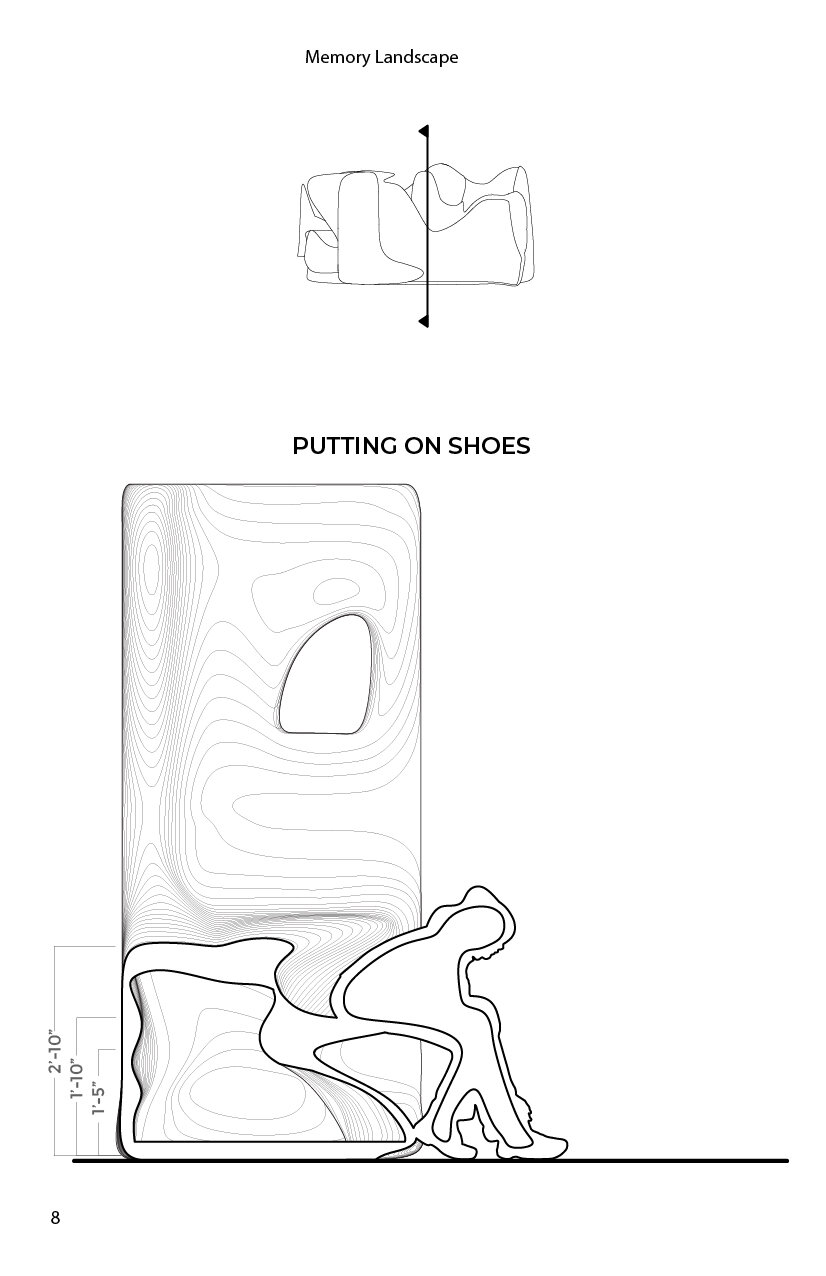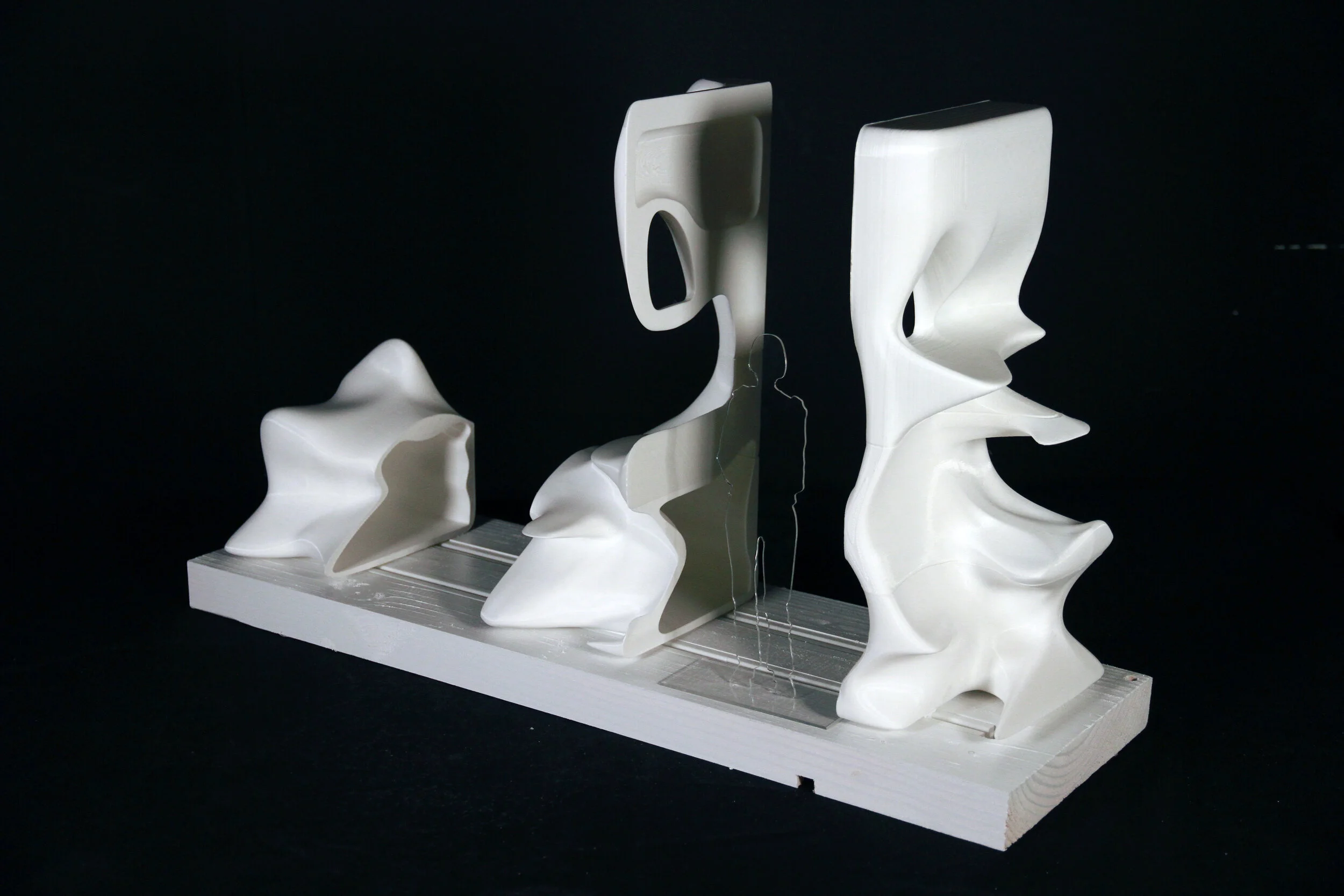














The Memory Landscape is a project in collaboration with research team at CityLab and Herman Miller.
What is learning today?
In 2019, learning is a balance between individual and social endeavors using a hybrid of analog and digital media. Students today use both large paper textbooks and thin, pocket-sized iPhones to research, study, and complete assignments. They work both privately and in social groups in various locations. Students either go to the library for research or just use Google and online databases on their digital devices.
What is living today?
Living today is constant movement of the body through space and absorption of information by the mind. Students today navigate dense daily schedules of part-time jobs, classes, extra-curriculars, study, family, friends, internships, blogs, meals, and daily hygiene. “Super-Commuters” in particular suffer under this pressure, as they do not have access to convenient and reliable accommodations for their non-standard living needs. How can space become a tool to adapt to the changing status of living?

The Memory Landscape is an organic unit with a range of nonspecific curves, making all surfaces usable and open for interpretation by the user.

In this way, the furniture is an extension of the human body, accommodating its diverse shapes, sizes, postures, and movements.

Unlike most furniture, whose only functioning surfaces are their tops and fronts, (such as couches, beds, and dressers), this furniture is designed to be used on all surfaces (inside, outside, front, back, and top).
